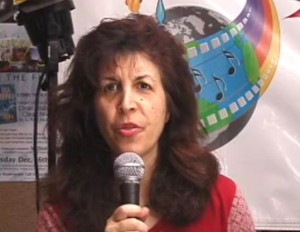 Jefferson Hawkins was once the top marketing executive for the Church of Scientology and helped it reach its greatest extent with the famous “volcano” TV ads in the 1980s. He’s told his tale of getting into and out of the church with his excellent books Counterfeit Dreams and Leaving Scientology, and he’s helping us understand the upside-down world of Scientology “ethics.”
Jefferson Hawkins was once the top marketing executive for the Church of Scientology and helped it reach its greatest extent with the famous “volcano” TV ads in the 1980s. He’s told his tale of getting into and out of the church with his excellent books Counterfeit Dreams and Leaving Scientology, and he’s helping us understand the upside-down world of Scientology “ethics.”
We’re nearing the end of this series, Jeff, but you’ve saved one of the best for almost last. We’ve always wanted to know more about Scientology’s brand of court justice. Tell us about it.
JEFFERSON: We’re now on Chapter 12 of Introduction to Scientology Ethics, and we’re going to be taking up every Scientologist’s favorite subject — Comm Evs! Of course, I’m being facetious — I think every Scientologist, and certainly every staff member, has their own horror stories about Comm Evs. It’s a system that is particularly prone to abuse and misuse.
THE BUNKER: So explain to us what a Comm Ev is.
JEFFERSON: A Committee of Evidence, or Comm Ev, is Scientology’s equivalent of a civil or criminal trial. Hubbard describes it as
A fact-finding body composed of impartial persons properly convened by a convening authority which hears evidence from persons it calls before it, arrives at a finding and makes a full report and recommendations to its convening authority for his or her action.
It’s interesting that Hubbard says, in his introductory remarks:
I have been working for some time on a system of justice acceptable to Scientologists and have evolved one in “Committees of Evidence.”
A couple of points on this: first, the system isn’t and never was acceptable to Scientologists, something Hubbard himself admitted in a 1970 briefing to the Guardian’s Office:
…This, of course, requires something that is very unpopular, which is a Committee of Evidence.
Second, he didn’t work out the system. It’s basically the military system of courts martial, which Hubbard was no doubt exposed to while in the Navy. The main difference between the Scientology system and the military system is that Hubbard removed most of the safeguards that protect that system from abuse.
THE BUNKER: A military system really has a different purpose than a civil system — to a large degree it’s designed to maintain order and discipline.
JEFFERSON: Exactly — which is why it probably appealed to Hubbard.
THE BUNKER: So walk us through some of the similarities and differences.
JEFFERSON: A Comm Ev, like a court martial, is an ad hoc tribunal appointed to look into a specific justice matter. The Comm Ev is appointed by a “Convening Authority” (and that term, by the way, comes straight out of military justice terminology). In the military, the Convening Authority is a senior officer. In Scientology, the Convening Authority is always a senior Scientology executive.
The Convening Authority appoints the members of the Comm Ev: a Chairman, a Secretary, and two to five Members. Here’s a key difference: in a General Court Martial, there is a military judge, a prosecutor, a defense attorney, and five members. In a Comm Ev, there is no defense attorney, and no prosecutor. In a Court Martial, the defense attorney and the accused can challenge the composition of the panel with cause. In a Scientology Comm Ev:
Interested parties and witnesses may not object to any membership or composition of the committee, it being taken for granted that the convening authority has been as impartial in this as is feasible.
Get that? No one can question the composition of the Comm Ev because it is “taken for granted” that the convening authority is impartial and fair. Since when did a justice system “take for granted” that those in power would never, never abuse that power? It’s a recipe for disaster.
THE BUNKER: Particularly since all of the members of the Comm Ev would be, one assumes, under the command of the Convening Authority.
JEFFERSON: That’s true. At the very least they are junior to the Convening Executive. In the military system there is some provision for this, as it is recognized that the court martial members are under the command of the Convening Authority. So they are required to take an oath of impartiality to swear that they will not let their decision be influenced by the convening officer. And the convening officer is prohibited from illegally influencing the members. Scientology has no such safeguards.
Another difference is this: In a criminal jury trial, the decision as to guilt or innocence requires a unanimous decision on the part of the jury. In a military court martial, it must be a two-thirds majority. In a Scientology Comm Ev, it is decided by a simple majority, and the Chairman can break a tie. So in a Comm Ev of, say, seven total members, three could believe the accused is innocent, and he or she could still be found guilty.
THE BUNKER: So how does a Comm Ev go about its business? How does it proceed?
JEFFERSON: First, the convening authority issues what is called a Bill of Particulars, which lays out the charges against the accused. This document also names the Chairman, Secretary and Members of the Comm Ev. The Committee then meets in a timely manner and gathers evidence.
THE BUNKER: And how do they do that?
JEFFERSON: They call for Knowledge Reports about the matter and read through all of those, then they often interview people involved, including the Interested Party (or Parties). It’s interesting that originally, there was no requirement that the Interested Party be present during the proceedings, but that changed when Hubbard later announced that
…all investigations include confronting the accused with the accusation and where feasible the accuser, BEFORE any disciplinary action is undertaken or any condition assigned.
After that, it was required that the Interested Party be present whenever testimony was given, and they also had to read any Knowledge Reports that the Committee had gathered.
When they have all the evidence, they write up a document called “Findings and Recommendations.” This summarizes all of the evidence they gathered, and lists out the punishments or penalties they are recommending. This then goes to the Convening Authority, who approves and issues it. The Convening Authority can lessen the recommended penalties, but cannot increase them.
THE BUNKER: So what happens if the Convening Authority disagrees with their findings?
JEFFERSON: Here we come to one of the major flaws in the system. What’s unstated here is that the Convening Authority can reject the Findings and Recommendations back to the Committee. It’s like any other “submission” in Scientology. It is sent up the lines with “Completed Staff Work” and it can and does get rejected, often many times. The Convening Authority also has the power to disband a Committee of Evidence and appoint a new one if he feels that the Committee is not “active in the prosecution of its business.” The bottom line is that the Convening Authority has the final word. If you don’t find what the Convening Authority wants you to find, you won’t get it approved.
THE BUNKER: So it’s really a sort of Kangaroo Court.
JEFFERSON: Pretty much so. Our modern legal system has evolved to prevent the sorts of abuses that were rampant in earlier centuries. Courts were often used as tools of state control. Where the state controls the machinery of justice, the potential for abuse increases. They can stack juries, unduly influence judges and so on. All of the legal safeguards we have developed are to prevent this sort of abuse and injustice. It’s ironic that Hubbard brags about the superiority of his system to “wog” law while basing his own system on military tribunals — and at the same time knocking out many of the time-honored safeguards of even that system.
There are other forms of justice procedures mentioned in the chapter, which I won’t bother to detail here — Boards of Investigation, Courts of Ethics, Ethics Hearings, Chaplain Courts. They are all run on more or less the same lines. A Court of Ethics, for instance, is the equivalent of a Summary Court Martial — presided over by a single officer. All of these have pretty much the same flaws as the Comm Ev.
Anyone who has been on staff will have their own horror stories about Comm Evs and other Scientology justice procedures and how they are manipulated and abused. I hope some of our readers will share their own experiences.
THE BUNKER: We do too! Let’s hear it, gang.
——————–
We heard from Arlene Cordova yesterday, and she gave us an interesting update on the story we wrote Tuesday about her daughter, Barbara Cordova Oliver.
We heard from a large number of people after our story came out that they had known Barbara or had information about places where she might be. Barbara had been a well known figure at Scientology’s Hollywood Celebrity Centre until she had a mental breakdown, was hospitalized, but then was removed from the hospital by her Scientologist husband, Robert. Arlene hasn’t seen her daughter since December 12, and hadn’t heard from her since a January 5 phone call.
Yesterday, she told us that Robert called while she was out, and he left a message. “He said that Barbara is having good meals, she goes for walks in the country almost every day, that she’s seeing a medical doctor, and that things are fine,” Arlene says.
“In the background I thought I heard Barbara say hello, but she never got on the phone,” she adds.
Arlene says she tried to trace the number that the call came from, but learned that it was from a throwaway MetroPCS phone.
“They’re using throwaway phones. They could be anywhere,” Arlene says.
We’re glad that our story apparently put enough pressure on them to try and contact Arlene. It’s also good to hear that Barbara appears to be with her husband.
We’re going to stay on this story.
——————–
Roz Cohn needs your help
Roslyn Cohn contacted us, looking for some help. You’ll remember her great one-woman show about Scientology, “diffiCULT to leave,” which she allowed us to premiere here at the Bunker. Well, one of her co-writers on that show, Jake Anthony, is going through a terrifying health crisis.
Although he’s only 36, Jake was felled by a case of pneumonia, and he’s been at death’s door for several weeks now. He was fortunate that a student of his, concerned about Jake’s silence, broke down his door and found him unconscious on his bed and barely breathing. Doctors now expect him to recover, but it will be a long, slow process.
“It would be so kind of those of you who enjoyed “diffiCULT to leave” for free on YouTube could find it in your hearts to donate to help Jake in his fight,” Roz says. “Without him, there would be no show.”
A GoFundMe has been established for Jake. Please consider donating something.
——————–
Posted by Tony Ortega on January 23, 2014 at 07:00
E-mail your tips and story ideas to tonyo94@gmail.com or follow us on Twitter. We post behind-the-scenes updates at our Facebook author page. Here at the Bunker we try to have a post up every morning at 7 AM Eastern (Noon GMT), and on some days we post an afternoon story at around 2 PM. After every new story we send out an alert to our e-mail list and our FB page.







